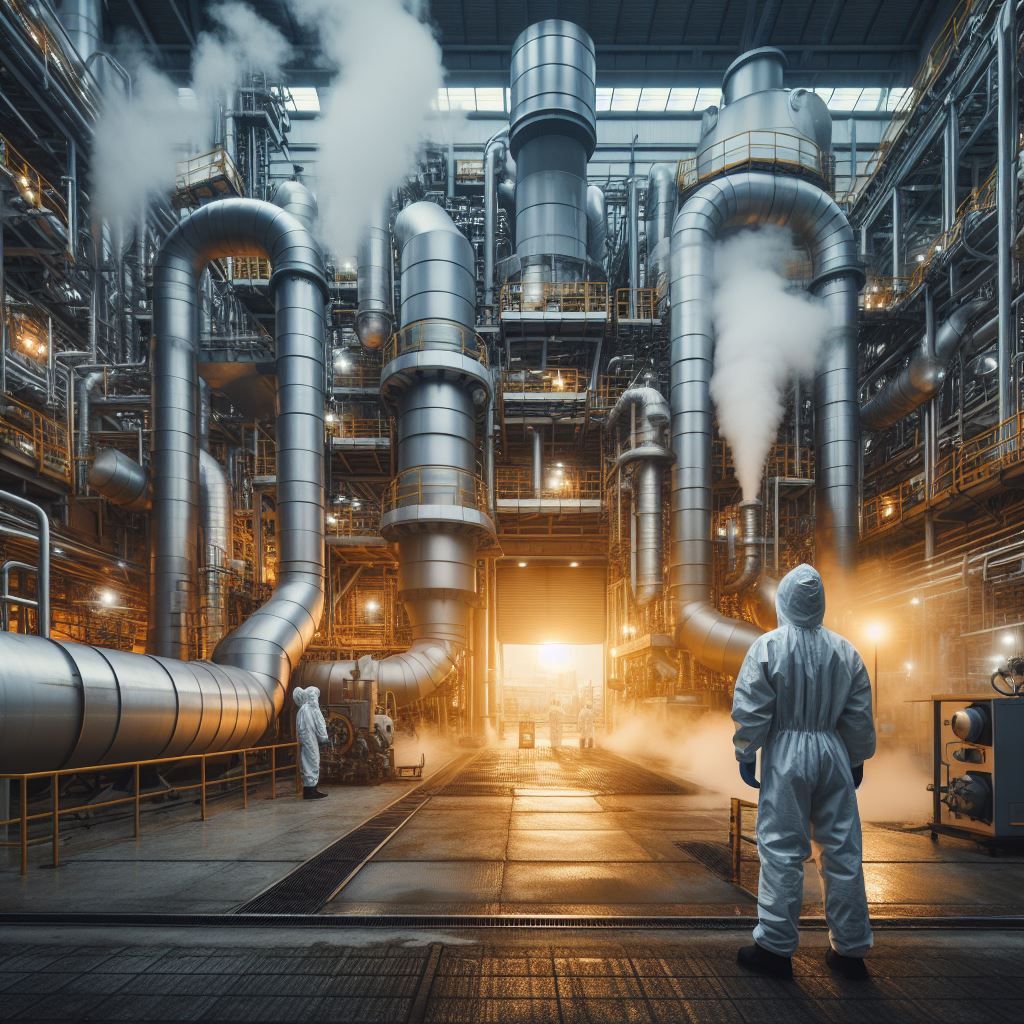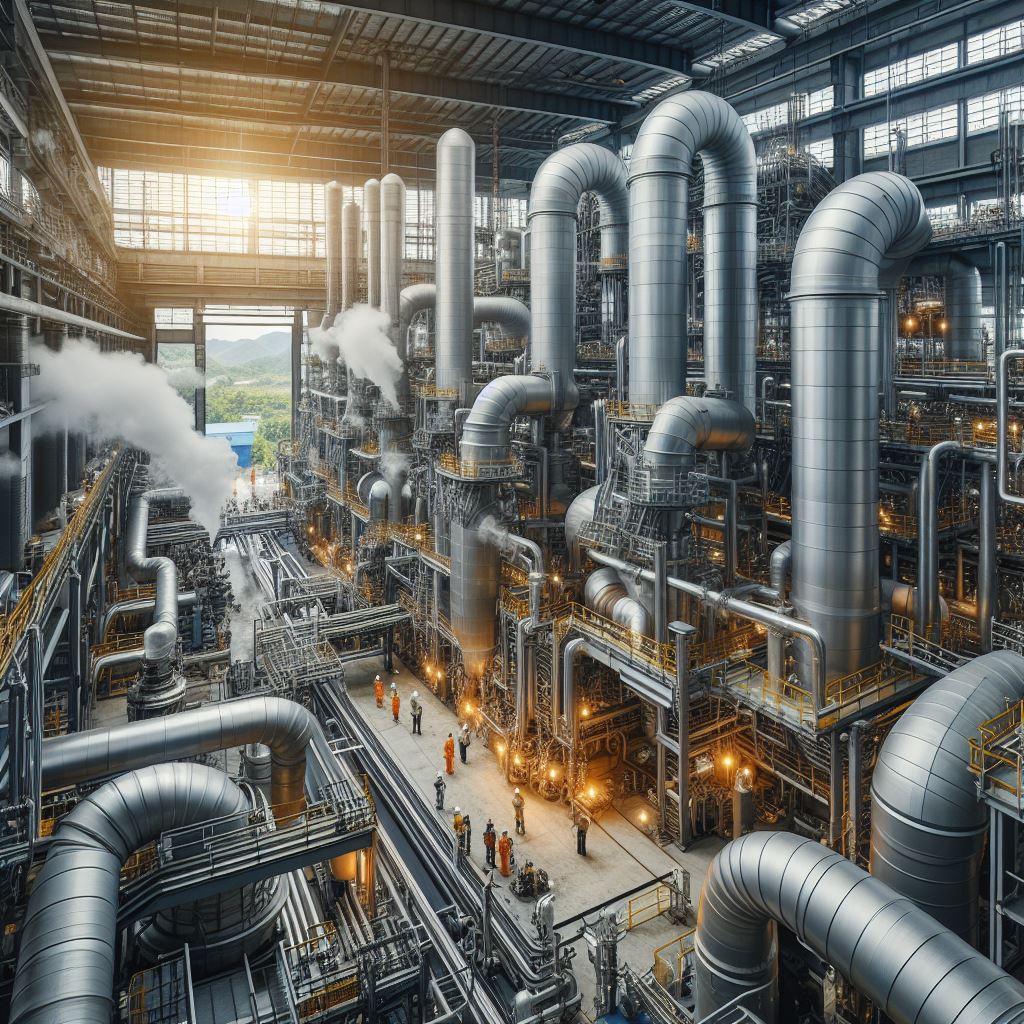
Waste heat recovery is a critical process in industry aimed at capturing and reusing the heat generated from various industrial operations. This unused heat, which would otherwise dissipate into the environment, can come from a range of sources such as furnaces, boilers, and turbines. The primary objectives of waste heat recovery are to decrease energy consumption and minimize environmental impact by reducing the reliance on additional fossil fuels.
To achieve these goals, advanced technologies like heat exchangers, recuperators, and regenerators are employed. These devices facilitate the transfer of heat from exhaust systems to fresh air or water used in industrial processes. Heat exchangers, for instance, work by transferring heat from a hot fluid to a cooler fluid, thereby preheating the incoming fluid and reducing the overall energy required for heating.
Another innovative method involves the use of thermoelectric generators, which operate based on the Seebeck effect. This phenomenon occurs when a temperature gradient is applied across a thermoelectric material, resulting in the generation of an electric voltage. This voltage can then be utilized to produce electricity directly from the waste heat, offering a highly efficient means of energy recovery.
Implementing waste heat recovery technologies contributes to the reduction of greenhouse gas emissions associated with traditional energy generation methods.
Waste heat recovery systems can often be integrated seamlessly into existing industrial processes, minimizing disruption and additional costs. Waste heat recovery is a valuable solution for economic and environmental benefits.
Key Technologies in Waste Heat Utilization
To grasp how industries can repurpose this excess heat, understanding the core technologies employed is crucial. Heat to power conversion units such as the Organic Rankine Cycle (ORC) and the Kalina Cycle represent significant advances in this field.
ORCs work similarly to traditional steam turbines but use organic fluids with low boiling points. This enables them to operate efficiently at lower temperatures prevalent in waste heat scenarios. The Kalina Cycle uses an ammonia-water mixture, achieving higher efficiencies due to its ability to adjust to specific thermal conditions.
These cycles are not just theoretical but are applied in real-world settings: power plants, manufacturing facilities, and even in renewable energy contexts like geothermal and solar thermal plants.
Application Spectrum: From Glass Factories to Geothermal Stations
The versatility of heat recovery systems is best illustrated by their wide range of applications across various industries. In glass manufacturing, for example, furnaces run at extremely high temperatures, leaving massive amounts of heat ripe for recovery. Utilizing this heat through recovery systems, these facilities can preheat raw materials or provide heating in other parts of the plant, drastically reducing the overall energy input needed for production.
Furthermore, in sectors not typically associated with high heat uses such as data centers, recovered heat can provide cost-effective heating solutions. By redirecting waste heat to nearby office buildings or residential areas, companies not only boost their energy efficiency but also contribute positively to community heating needs, fostering a more sustainable energy landscape.
Boosting Energy Efficiency Through Industrial Heat Recovery
The adoption of waste heat recovery systems plays a critical role in pushing industrial energy efficiency forward. By integrating these systems, plants not only reduce their fuel consumption and carbon emissions but also enhance operational efficiency and reduce operational costs. There is an upfront investment, but the payback period is often short, given the significant savings involved.
Moreover, with rising energy costs and stringent environmental regulations, industries are more inclined than ever to adopt these systems. Governments and international bodies have recognized these benefits, offering various incentives for industries opting for waste recovery solutions.
Future Directions in Heat Recovery Innovations
As the demand for sustainable industrial practices grows, so does the innovation in heat recovery technologies. One promising area is the enhancement of heat pump technologies which can increase the temperature of recovered heat to levels suitable for more industrial applications. Enhancements in materials science are also paving the way for more efficient thermoelectric materials that could soon allow for widespread adoption of heat-to-power systems in industries currently not utilizing waste heat optimally.
Another exciting development is the integration of waste heat recovery with renewable energy systems. For instance, using excess heat from solar power plants can help in creating a more stable energy output, balancing the intermittent nature of solar energy with the reliability of heat-driven processes.
Engaging with the Real-world Impact of Waste Heat Recovery
The benefits of embracing waste heat recovery are not confined to energy savings or environmental impacts alone. They extend into enhancing the resilience of industrial operations, providing a competitive edge in a market where efficiency and sustainability are increasingly prized.
In Europe and North America, we already see robust frameworks promoting these technologies, with industries ranging from automotive to food processing reaping the benefits. Similarly, in Asia, rapid industrialization coupled with an increasing focus on sustainable practices is setting the stage for a significant expansion in waste heat recovery initiatives.
Your Role in the Energy Efficiency Revolution
Participating in this movement towards more efficient energy use doesn’t require you to be the CEO of a multinational corporation. Awareness and advocacy go a long way. Encouraging local businesses to consider waste heat recovery solutions, supporting policies that favor sustainable energy practices, or simply spreading the word about the benefits of such systems can contribute significantly to broader change.
By understanding and promoting waste heat recovery as a viable and valuable energy-saving opportunity, each of us can play a part in steering the global industry towards a more sustainable and efficient future. Whether it’s through discussions on online platforms, community meetings, or educational seminars, starting the conversation is the first step towards a more sustainable planet.

